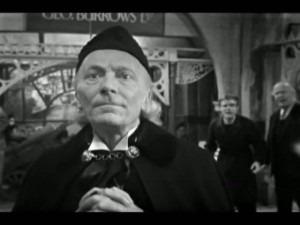
A gradual but inevitable descent into cricket-based loathing and bile.
FLT20: Stars Of The Season
Last year, almost a year to the day, we produced an article looking at the stars of the 2011 English T20 season. A quiet, unassuming bit of statistics turned into sentences, it disappeared down the back of the enormous virtual sofa of the internet without so much as a comment. While this was somewhat disappointing, it was probably still preferable to the more traditional mountains of personal abuse. Nevertheless, when the time came for annual reviews with Editor Steve, he brought this article out as an example of the sort of thing he wanted more of, if we were to avoid having our weekly wage reduced again next year.
“Facts. That’s what it’s all about. No-one wants to hear opinions. Opinions make people feel stupid, because deep down they know that they should have been capable of deducing that Ravi Bopara’s shot selection is appalling without being told. By opinionating [sic] about it, you’ve ruined their experience of the site. So next year, fewer opinions and more facts. And less gin. Close the door on your way out.”
Hence this year we weren’t actually allowed to choose the FLT20 team of the season. Instead, ahead of today’s first set of quarter finals, we fed the data into Steve’s massive WOTAN supercomputer and, after an attempt to take over the world so rubbish that it was foiled by an old man, a secretary and a sailor, it produced the eleven names you see below. It then invited the various members of the team to add comments, without expressing any opinions whatsoever, in line with our new policy.
#1 Luke Wright (Sussex); 308 runs, 2 wickets
Nichael Bluth: Bollocks to that policy, we bloody love Luke Wright. He’s followed what we’ll call the Steve Smith curve, from novelty international cricketer of no fixed role through heading out into the wilderness to actually learn to play the game to becoming a key player who can’t actually get into the team. With 308 runs at 44 (and a far from tardy strike rate of 169) he was a huge part of Sussex’s stroll through the group stage. Having finally settled on a role as a pinch-hitting opening batsman, he didn’t do much with the ball, taking two wickets at 46, with an economy rate just below ten. We don’t care – he’s the new Steve Smith!
#2 Herschelle Gibbs (Durham); 277 runs
Matt H: The veteran South African may be more famous these days for his autobiography than for any on-field exploits, but his 277 runs included three fine knocks: 49* chasing an easy victory against Leicestershire; 83* from 53 balls in a successful chase against Derbyshire and 76 in a defeat to Yorkshire. However, Durham missed out on qualification, so it’s debatable whether the money they (probably) spent acquiring Gibbs was actually worth it in the end.
#3 Steven Croft (Lancashire); 313 runs, 1 wicket
NB: A great example of the difference between the IPL and the English equivalent, Croft is the sort of county pro that nobody’s actually ever heard of, despite being around for a few years. He was perhaps the one bright spark in a disappointing campaign for Lancashire as they missed out on a place in the quarter finals, bashing eleven sixes on his way to more than 300 runs. It was enough of a performance for the bods at the ECB to take notice, with Croft included in the provisional 30 for the T20 World Cup in Sri Lanka.
#4 Phil Hughes (Worcestershire); 322 runs
Matt Larnach: One of the gems delivered up by the IPL commentators this season, as they tried to come to grips with the unorthodox brilliance of a Steve Smith innings, was that his effectiveness stemmed from his ability to hit the ball into “strange parts of the field”. If the batsman seemingly has no idea what he is doing, the fielding captain has bugger all chance of setting a field that can hope to contain him. Hughes is an old master at the unorthodox game; head up, front foot firmly planted somewhere outside leg stump and heaving across the line. When it doesn’t work it’s just plain awful. But when it does work, you can see the results; there’s a reason why unfancied Worcestershire are in the quarter-finals.
#5 Paul Stirling (Middlesex); 271 runs, 2 wickets
James K: Middlesex had a tough T20 season; Eoin Morgan and Steven Finn proved too big a loss to cope with and they struggled to make any impact on the competition. That is, apart from Stirling, who was their leading run scorer despite missing three matches thanks to his international commitments. An average of 45.16 at a strike rate of 142.63 is seriously impressive, and he saved a couple of his best efforts for when the Sky cameras were in town. If he keeps up that sort of form for long he’ll follow in the footsteps of fellow Irish stalwarts Morgan and Ed Joyce in gatecrashing the England set-up.
#6 James Foster (Essex); 244 runs
JK: If we were to let you into a little secret, we’d whisper that James Foster is one of our favourite cricketers. Rarely does 51allout agree on anything, but in our affection for him we are united. It’s always pleasing to see a man whose batting wasn’t considered good enough for the international stage smack it about, and Foster consistently does that in the one day arena nowadays. His 244 runs made him Essex’s joint highest run scorer this season with James Franklin. The New Zealander’s strike rate was 111, Foster’s a shade over 165. He may well be the best ‘finisher’ in the county game, with his 15 sixes putting him top of that particular table.
#7 Abdul Razzaq (Leicestershire); 266 runs, 9 wickets
JK: Contrary to popular belief, stats aren’t everything. What Editor Steve’s oppressive computer-based regime fails to realise is that they can be quite misleading until you dig a little deeper. On the face of it, 266 runs is a reasonable return whilst part of a particularly awful team, but those numbers don’t really reflect Razzaq’s performance. More than half of his runs (144, to be exact) came in the final three games, by which time Leicestershire’s title defence had long been consigned to the graveyard of history. Last summer Andrew McDonald scored 500 runs and took 12 wickets in the group stage. Razzaq was poor when it mattered and his fitness and general athleticism is borderline disgraceful. Suffice to say, some of us don’t think he should have made this side.

James’s first appearance on Cricket Writers on TV was going well until Paul Allott mentioned Abdul Razzaq.
#8 Moin Ashraf (Yorkshire); 14 wickets
NB: There’s no shortage of experience in the top seven of this side, but Ashraf is something quite different, being young, raw and very promising. His 14 wickets included 4/18 in a demolition job against Derbyshire as Yorkshire romped to top spot in the North Group despite a distinct lack of batting strength.
#9 Chris Liddle (Sussex); 14 wickets
NB: Left arm seamers seem to have had a field day in this season’s competition, with Liddle being the first of three to make the side. He started with a five wicket haul against Middlesex and picked up three against Essex as well as Sussex got off to a flying start that only the weather could stop. As the best bowler for the best side in the competition so far (Michael Yardy was their second highest wicket-taker with seven), we can’t exactly argue with his inclusion here.
#10 Mitchell Starc (Yorkshire); 0 runs, 18 wickets
ML: “He bowls to the left, he bowls to the right, that Mitchell Jo..” , ah, sorry, wrong Mitchell. Not the rubbish left arm slinger from Queensland, but the actually rather good left arm slinger from New South Wales, currently bringing joy to the people of England by taking bucket loads of wickets for Yorkshire. His signing was met with general apathy mixed with merth after that visa bungle, but we bet Yorkshire fans weren’t happy to see Mitch called away from the squad for the final Australian ODI a week or two back. Not happy at all.
#11 Reece Topley (Essex); 1 run, 14 wickets
MH: And what a run it was. Not yet 18 and a half, Topley’s a tall (we’re talking Finn/Tremlett height here, though without the good looks) left armer. He went wicketless only twice in his eight matches, and he excelled with 3/19 against Kent. In the middle of the T20 series he also found the time to take 4/46 against the touring Australians, but that in itself doesn’t really deserve much credit. He’ll be representing England in the Under-19s World Cup later this summer and certainly has the potential to go on to greater things.
In many ways this team reflects the FLT20 as a whole; there’s no great excitement in the side, although that bowling attack isn’t too shabby. In damp conditions the spinners struggled to have any impact on the competition – Scott Borthwick being the closest to this side with 12 wickets – while the batsmen found it impossible to play truly significant innings. James Hildreth’s 107* against Glamorgan was the only hundred in the (theoretical) 90 matches and if ever a statistic sums up a competition perfectly, that is the one.




No Comments
Post a Comment